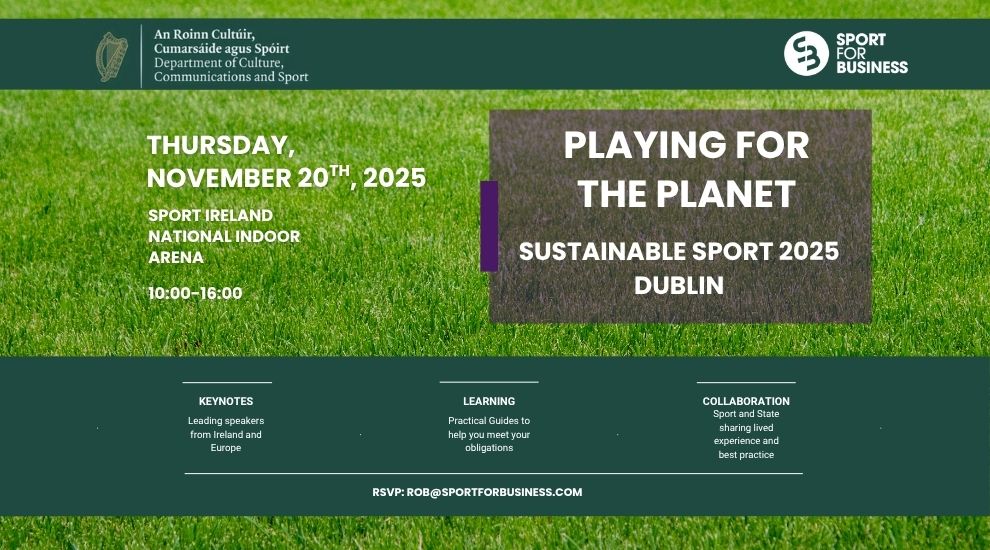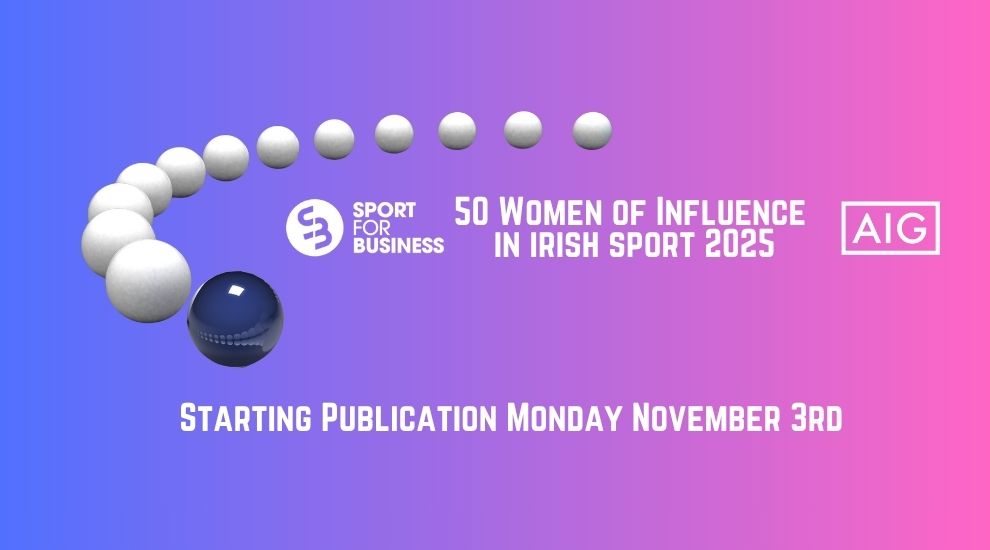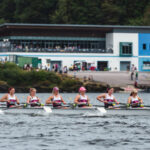Today at the Sport Ireland Campus, the destination of some €3 million in projects specifically brought forward to benefit Women in Sport will be announced.
Back in March, Sport Ireland announced the findings of a major scoping exercise they had acrried out across the sector and the appointment of a committee specifically charged in the area of Women in Sport.
Lynne Cantwell had recently come onto the board of Sport Ireland and was aked to Chair the group. Recently Sport for Business sat down with her as part of a Guinness launch of their Liberty Fields video content and asked her how things had been going with that area of her life.
SfB: How have things been since the Committee was named?
LC: We launched the policy in March and a really strong committee drawn from across sport and business was put in place to steer where Sport Ireland might go in this really important area.
Sport Ireland put an initial €3 million on the table to support ideas brought forward from National Governing Bodeies in sport and also to appoint a Women in Sport lead that would help us to execute a strong approach to improving things where we could.
Nora Stapleton was appointed in April and since then we have taken the time to look closely at what was needed.
SfB: How far did you go in terms of looking for new ideas?
LC: We have taken the chance to look at where other countries, who might be a little further down the path than us, have gone and how we can learn from them.
There are four key pillars that we want to have an impact in. Visibility, Coaching and refereeing, Participation and Governance and Leadership.
The sense is that we want to have a big impact in a number of areas and not spread ourselves too thin by trying to do everything.
SfB: Was it an easy decision to take on the Chair of the Committee?
LC: After finishing playing you still have the same fire, the same desire to make a contribution in sport. I wanted to do that off the field and I looked into various ways that i could get involved. It’s not easy to navigate your way but I saw the position advertisied looking for directors of SportIireland and I put myself forward.
I was asked to come onto the Board representing the players voice, not that of women specifically, but when the policy was being shaped and a Women in Sport Committee formed, I felt it was the right thing to be part of the decision process.
I was motivated by the chance to work with some really great people and once we knew there was a real commitment from Sport Ireland to back our judgement it was an easy choice to say yes.
There has of course been a huge amount of really good work alresy done in this area. The 20X20 campaign has been excellent. Sport Ireland does have an important part to play in changing the landscape in a way that is long term and sustainable and that’s what we are setting out to do.
SfB: So is the aim of the Committee very much focused on the long term?
LC: Our initial term is for three years. If the model we adopt in terms of making an impact, reducing gradients between men and women then that can be applied to other areas of diversity and inclusion.
We know where we want to make a difference. Now it’s down to doing so as best we can, with the willing support of a lot of different people. It will take time but once momentum is there there’s every reason to believe it can be done.
SfB: has it been frustrating not to be able to include the FAI in your immediate thinking due to the suspension of Sport Ireland funding, particularly over a summer where the FIFA World cup was such a big occasion?
LC: I prefer to focus on the positives. the World Cup was great in so many ways. I was never the greatest football fan. I grew up in a house where Liverpool were idolised and Football was on the telly all the time. It probably scarred me but this World Cup was great. It showed what was possible and it moved the story from one of advocacy to one of performance. This was high class sport regardless of gender.
We can’t engage directly with the FAI at the moment but in time we know there is a lot of really good work that can be done there.
SfB: What do you see as the key challenges, the main barriers to getting more girls and women involved?
LC: In many ways they are the same for men and women. We want to have a coaching environment which is welcoming. It’s important to make sport fun, particularly at a younger age, and perhaps particularly for girls who are stepping into a sporting environment that their Mothers might not have had a chance to enjoy in the same way as their Fathers.
Good coaching is incredibly important and we have to encourage more Women to find their way into that, as well as into other areas off the track, the pitch or where they have been engaged in sport.
I’m not a fan of quotas but we have to recognise that greater diversity and more different voices are needed around the Governance table.
SfB: Where can the initial gains be made?
LC: 20×20 has been great in chipping away at preconceptions and raising interest in getting involved. A lot of the approach in other countries has relied on big Government investment, through programmes like This Girl Can.
We need to see what can be done with more limited resource than Britain can put towards campaigns but we need to map oursleves more against the likes of New Zealand, Denmark or the Netherlands.
Young children and young girls in particular are not getting the right amount of physical activity and we need to address that through schools, through sport and at home.
SfB: How would you see success at the end of your term as chair?
LC: I’ll look at that against each of our four key pillars.
In Governance and Leadership I’d like to see sufficiaent structural change to make it easier and more transparent for more Women, and more people with different opinions to make it through into positions of leadership.
In participation we need to drive down the gradient between boys and girls lower still. It’s already reduced from 15% to 4.5% but there is no reason why there should be any difference.
In Coaching and refereeing we want this to be seen as a path to follow after playing days are done.
Finally in terms of visibility we need to let people know that change is happening, to give them confidence to be a part of it and to bring people along on the road by removing the notion that change might not be good. It will be.



Image Credits: Dan Sheridan, Inpho.ie






























